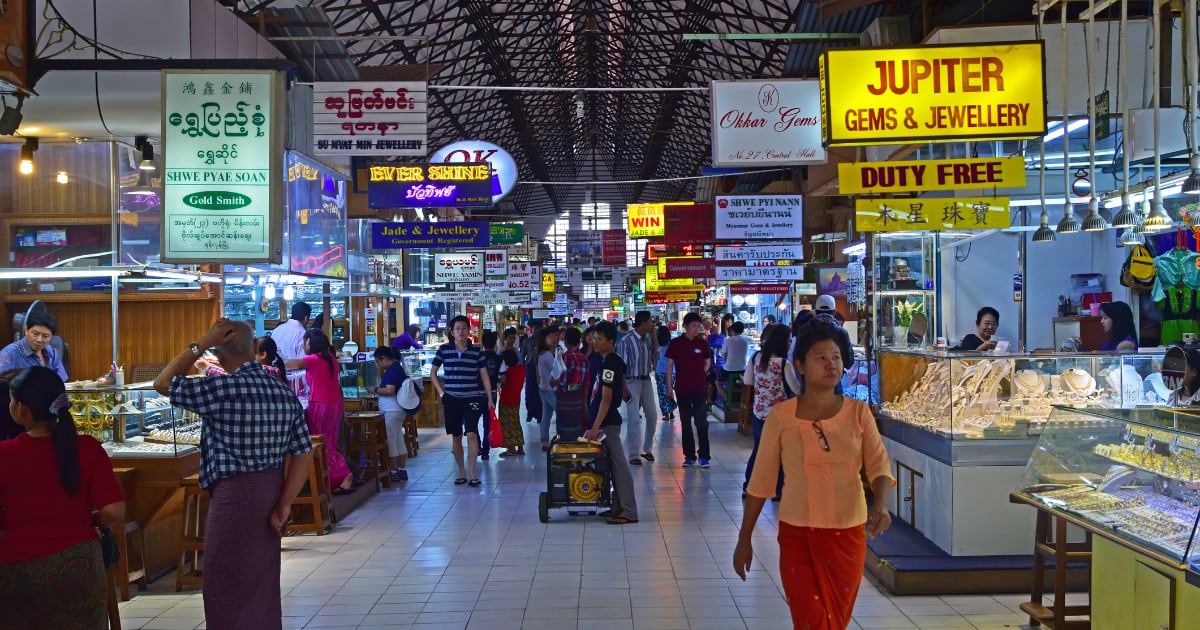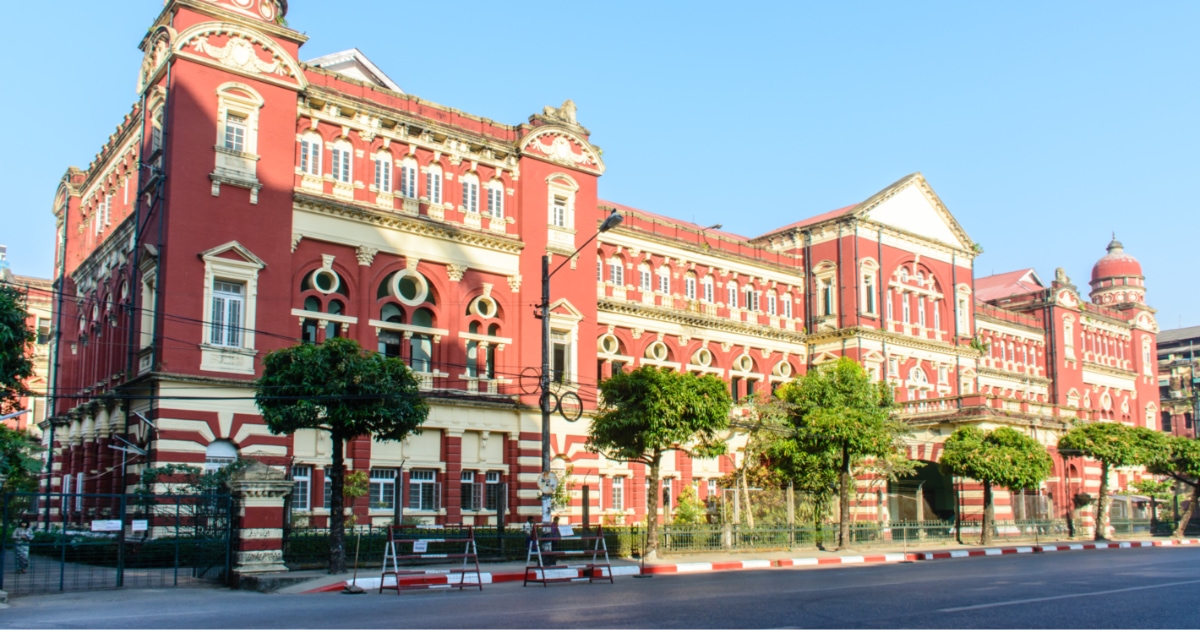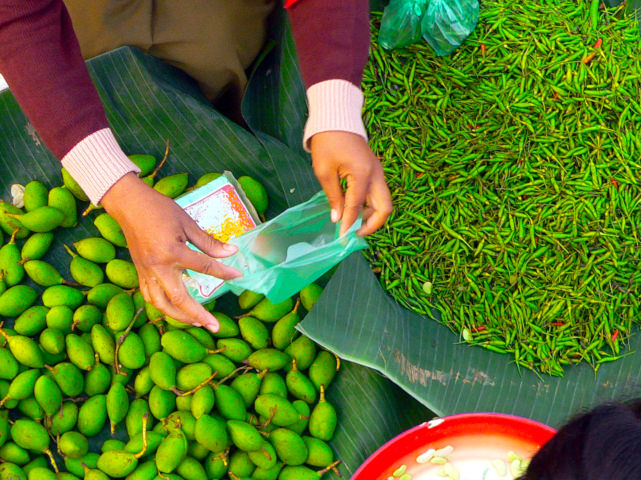Myanmar Highlights
August 2018
Download PDF | Download word version
ASX-listed junior Myanmar Metals Limited (“Myanmar Metals”) has unveiled an accelerated path to redevelop for the Bawdwin polymetallic mine, in Myanmar. Myanmar Metal, has announced that it has, together with its joint venture (“JV”) partners Win Myint Mo Industries Limited (“WMM”) and EAP Global Mining Company, defined a number of clear project milestones for the next 12 months. The milestones will include exploration programmes, a range of engineering and metallurgical studies, prefeasibility and feasibility studies, updates to the reserve and resource assessment, as well as offtake and project financing negotiations. The completion of the prefeasibility is targeted for early 2019, and will feed into a feasibility study, which is planned for completion for later in the year. The JV partners are hoping to start construction in 2020, and commission and first ore processing by late 2021. The Bawdwin concession contains a tier-one polymetallic deposit with a maiden JORC-compliant resource of 82-million tonnes, at 4.7% lead, 119 g/t silver and 2.4% zinc. Prior to the Second World War, Bawdwin was the largest producing lead mine, and one of the largest producing silver mines in the world. After the Second World War, the Myanmar State held the mining concession until 2009, when it was acquired by WMM. (Source: http://www.miningweekly.com/article/myanmar-puts-bawdwin-on-fast-track-2018-08-15, 15 August 2018)
Myanmar Government enters into memorandum of understanding with South Korea’s Wooree Group
The Yangon Government and Myanmar Wooree Company Limited, a subsidiary of the South Korean Wooree Group, have entered into a memorandum of understanding (“MoU”) in respect to the development of an industrial park in Yangon. The area to be developed is situated on the west bank of the Yangon River in the vicinity of the Yangon-Dala Bridge, which is being jointly developed by the Governments of Myanmar and South Korea. The bridge and industrial zone are expected to provide the impetus for the wider economic development of the region. Separately the Yangon Government has established a new enterprise to draw up a roadmap in respect to the expansion of Yangon with a view to making it more livable and business friendly. The ‘Southwest New Town Project’ is part of a city-wide urban development project. The project covers around 15% of the Yangon region and is designed to create job opportunities for some 2 million people. In addition to the Southwest New Town project, other new towns are also planned for Thilawa, Dagon East and Dala. At present the Yangon region has a population of approximately 7.4 million, but is expected to reach 10 million by 2018. (Source: http://www.xinhuanet.com/english/2018-08/13/c_137386350.htm; 13 August 2018)
Myanmar Government expects oil and gas revenues to exceed US$2 billion in current fiscal year
According to its budget forecasts the Myanmar Government expects to receive more than US$2 billion from the sale of oil and natural gas in the year ending 31 December 2019. Revenues from onshore and offshore oil and gas exploration and production, include bonuses, taxes, royalties and cost recovery, are expected to be approximately Kyats 1.87 trillion (or approximately US$1.2 billion). The remaining income will be derived from piped gas, including fees for land leases. Offshore gas production is expected to reach 653,310 million standard cubic feet. The Petronas operated Yetagun gas field in the Andaman Sea is expected to produce 868,360 barrels of condensate. Total expenditure for the oil and gas sector is expected to be approximately Kyats 1.45 trillion (or approximately US$949 million). (Source: https://www.mmtimes.com/news/govt-expects-us2-billion-oil-and-gas-2018-19.html; 27 July 2018)
Myanmar’s Ministry of Electricity and Energy enters into power purchase agreement with State Power Investment Co.
Myanmar’s Ministry of Electricity and Energy has entered into a power purchase agreement with State Power Investment Co., Limited (“State Power Investment”), the developer of the Chi Phawy Nge hydro power station, located in Kachin State Northern Myanmar. The Myanmar Government is committed to generating electricity from a variety of resources and promote local and foreign investments in electricity and energy. The Chi Phawy Nge power plant is expected to be particularly beneficial to the local residents by creating jobs and economic opportunities and supporting local socio economic development. State Power Investment has been contributing 1% of profits from the project to local CSR initiatives to protect the environment and improve the local people. The 99MW plant which was completed in 2011, has been providing electricity to the national power grid via a 132 KV electrical substation located in Waimaw Township. (Source: https://www.pwc.com/mm/en/publications/assets/newsletters/myanmar-business-intelligence-%20119.pdf; 24 July 2018)
Myanmar Licensed Contractor Association submit draft Apartment Law to Myanmar parliament
The Myanmar Licensed Contractor Association (“MLCA”) has submitted a draft Apartment Law (“Apartment Law”) for parliamentary review. The Apartment Law addresses a regulatory gap in Myanmar’s property sector and is expected to boast the market for apartments in Myanmar. The Apartment Law seeks to regulate apartment buildings with an areas less than 20,000 sq. ft. Myanmar’s Condominium Law introduced in 2016 introduced rules in respect to apartment buildings with an area in excess of 20,000 sq. ft. The Apartment Law, which was drafted with the assistance of former Government officials as well as legal professionals, provides recourse for both sellers and purchasers of apartments in the event of contractual disputes. At present purchasers and sellers of apartments have no legal protections in the event of fraud or for failure to complete a purchase. In Myanmar, land can be registered for sale and also mortgaged or used as collateral. However there is no such system in respect to apartments. The Apartment Law is broader in scope than the Condominium Law, and according to the MLCA will help generate a more stable and credible apartment market with greater potential for growth. (Source: Myanmar Times https://www.mmtimes.com/news/constructionsector-submit-draft-apartment-lawparliament.html; 27 July 2018)
Myanma Insurance to offer livestock insurance for the first time in 30 years
Myanma Insurance has announced it intends to launch livestock protection insurance for the first time in 30 years by the end of 2018. The State-owned Myanma Insurance, the Department of Livestock Breeding and Veterinary under the Ministry of Agriculture, Livestock and Irrigation (“MOALI”), Singapore-based InfoCorp Technologies Pte. Limited (“InfoCorp Technologies”) and Myanmar’s RGK+Z&A Group are cooperating to launch the livestock insurance via a pilot project. The process will include registration of livestock using InfoCorp Technologies’ tamper-proof livestock identification tagging technology. This involves inserting a digital chip into each animal. The registration fee per head of cattle is estimated to be approximately US$2. There is also a premium rate of about 1% of value of the livestock. Livestock registration using this technology is the important step in the provision of livestock insurance. Myanma Insurance first provided livestock insurance in 1983. However, it was forced to discontinue the policy as it lacked the technology to distinguish between insured and uninsured animals. By insuring their cattle and livestock, breeders should be able to secure bank loans to grow their herds, and use their livestock as collateral. Myanma Insurance is currently finalising its insurance policy, including premium and the levels of compensation to be paid in the event of death or disease. According to official MOALI statistics, there is currently a total of 11.5 million head of livestock in Myanmar. (Source: https://www.mmtimes.com/news/livestock-insurance-be-launched-year-end.html; 16 August 2018)
Myanmar Government accepts €30 million interest-free loan from Italy to support Myanmar’s National Electrification Project
The Pyidaungsu Hluttaw has approved a €30 million interest-free loan from Italy which will be used to provide electricity to villages in Chin State and other rural areas in Myanmar. According to Dr. Aung Thu, of the Ministry of Agriculture, Livestock, and Irrigation (“MOALI”) – which will be managing the electrification project – the loan is for a period of 10 years with repayments until 2036. The annual repayment amount is estimated to be approximately €3 million. The private sector will be permitted to participate in the electrification project by developing small- small-scale solar and hydropower systems. The loan will cover 60% of the project costs, while private investors and the public will be expected to contribute the remaining 40%. The project is part of the National Electrification Project which aims to achieve national electrification by 2030. The World Bank has already provided US$400 million in assistance towards National Electrification Project that goal. To date, only 40% of the estimated 64,000 rural villages in Myanmar have to electricity.
As at 31 March 2018, Myanmar owed US$10.2 billion to 21 foreign countries and institutions. That excludes an additional US$40.5 million loan for agriculture from the Asia Development Bank, which has been proposed by MOALI. China is Myanmar’s biggest creditor, representing approximately 40% of the Myanmar’s total debt, or around US$4 billion. With the interest on some of these loans as high as 4%. Myanmar’s debt to Japan, represents approximately 25% of its total foreign debt. Historically Japan has provide loans to Myanmar at lower interest rates compared to other countries.
|
Myanmar’s National Debt (31 March 2018) |
|
|
Creditor |
% Of Total National Debt |
|
China |
40 |
|
Japan |
25 |
|
Others |
23 |
|
World Bank |
12 |
Of the 13 ministries comprising Myanmar’s Government, the Ministry of Electricity and Energy is the recipient of the highest amount of the funds provided by foreign creditors, at around 30% of total foreign debt. The Ministry of Planning and Finance, Ministry of Transportation and Communication and Ministry of Industry is the second largest recipient. Myanmar’s national debt is approximately 33% of its GDP, which is less than the national debt of neighboring countries such as Malaysia, which has a debt to GDP ratio of almost 65%, and Cambodia which had a debt to GDP ratio of approximately 43% in 2016.
(Source: https://www.mmtimes.com/news/myanmar-accepts-loan-italy-foreign-debt-rises.html; 17 August 2018)
Wooree
Ministry of Electricity and Energy
Bawdwin
State Power Investment
Apartment Law
oil and gas revenues
Myanmar Licensed Contractor Association
National Electrification Project
MOALI
InfoCorp
Pyidaungsu Hluttaw
RGK+Z&A
This newsletter is for information purposes only. Its contents do not constitute legal advice and it should not be regarded as a substitute for detailed advice in individual cases.
Transmission of this information is not intended to create and receipt does not constitute a lawyer-client relationship between Charltons and the user or browser.
Charltons is not responsible for any third party content which can be accessed through the website.
If you do not wish to receive this newsletter please let us know by emailing us at unsubscribe@charltonslaw.com








